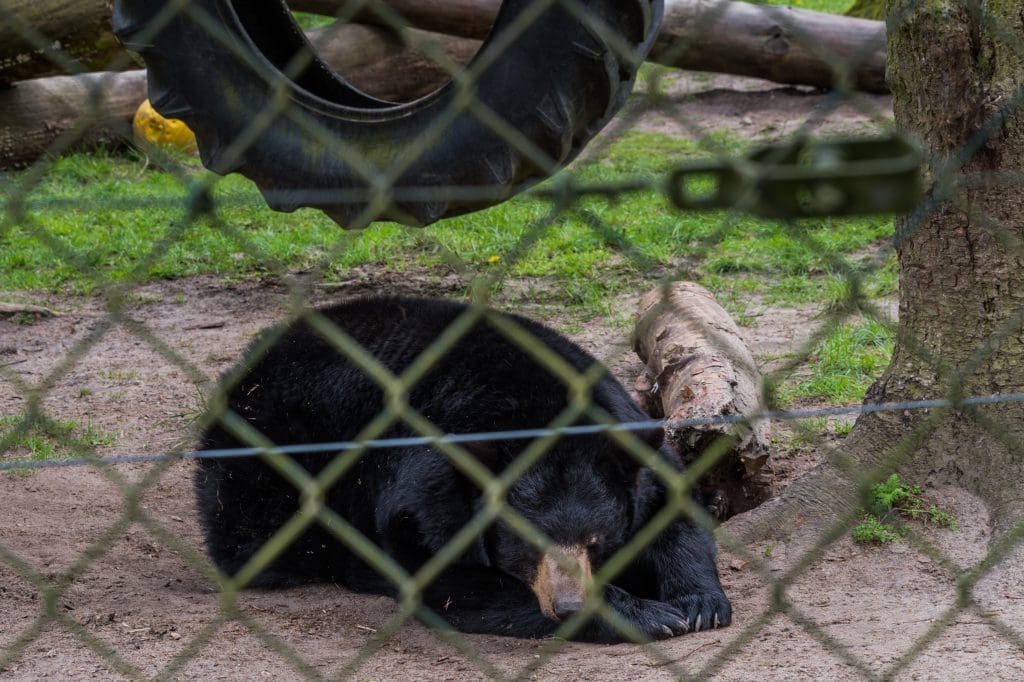
Last week, media reported that a two-year-old girl was hospitalized following an incident at the Greater Vancouver Zoo (GVZoo). Reports indicated the toddler was able to access an area not open to the public and was bitten through a fence by a black bear, leaving her with a broken arm and injuries to her hand. The B.C. Conservation Officer Service has since opened an investigation into the incident.
While GVZoo issued a statement over Twitter, including reference to its adherence “to the safety standards put forth by Canada’s Accredited Zoos and Aquariums (CAZA) to ensure the safety and well being of all patrons and our animals”, this means little considering that CAZA is a private zoo and aquarium industry association formed to represent its members’ interests. CAZA’s zoo and aquarium accreditation program amounts to the industry certifying and overseeing itself, which raises concerns about animal welfare, public safety and overall accountability and transparency within the industry.
In fact, some especially controversial zoos and aquariums have been given the CAZA stamp of approval, including African Lion Safari, an Ontario zoo that recently made headlines after being ranked in a World Animal Protection report as among the most cruel and outdated in the world. The CAZA-accredited facility offers elephant rides to guests, as well as the opportunity to pet elephants, take posed photos with them and watch them perform tricks. Shows, tricks and elephant rides are often associated with inhumane and traumatic training techniques while the practices themselves compromise the physical and psychological welfare of the animal and can present safety risks for guests. Earlier this summer, African Lion Safari was again in the news after a trainer was seriously injured in an incident with one of the zoo’s elephants.
Vancouver Humane has long-campaigned against the keeping of wild and exotic animals in captivity on the basis that their social, physiological and behavioural needs cannot be met in captivity. Captive animals often suffer due to a lack of space and enrichment, isolation, inappropriate social groupings and unsuitable environmental conditions. Depriving wild and exotic animals of the ability to perform instinctual behaviours in their natural habitat compromises their overall welfare and can lead to premature deaths.
GVZoo has a contentious history that reflects many of these issues, including but not limited to the 2015 death of a 15-month-old red panda, ‘Rakesh’, due to a fungal infection; the 2014 death of a two-year-old Siberian tiger, ‘Hani’, due to a lung infection; the deaths of three giraffes between 2011 and 2012; the 2009 stress-induced deaths of four zebras after two cape buffalos were placed inside their enclosure; the 2006 cruelty charge against GVZoo over the mistreatment of Hazina, a two-year-old hippo who had outgrown her pool and was kept for 15 months in a concrete holding pen with no outdoor access; and finally the high-profile and tragic story of Tina the elephant, who was kept for more than 30 years in a small, barren pen (many years of which she spent alone) and suffered from foot problems worsened by the ground in her enclosure. After a long-fought campaign by VHS and Zoocheck Canada and increased public pressure, Tina was transferred in 2003 to a sanctuary where she lived with other elephants and her foot condition improved, but sadly she died unexpectedly almost one year later of a sudden heart condition.
Vancouver Humane maintains that there are more ethical, effective and safe ways to engage in public education and wildlife conservation – the main claims that zoos and aquariums use to justify the keeping of wild and exotic animals in captivity. Alternatives include sanctuaries and wildlife rehabilitation centres, ethical eco-tours, documentaries and films (e.g. The Great Bear Rainforest IMAX film), and the use of immersive technology to offer interactive animal-free exhibits (e.g. National Geographic’s “Encounter: Ocean Odyssey”) to educate the public about wildlife and conservation issues.
As the public becomes increasingly aware of the welfare and safety issues associated with wild and exotic animal captivity, attitudes surrounding the practice are evolving. Canada’s recent ban on the keeping of whales and dolphins in captivity illustrates this. It’s time for zoos and aquariums to embrace this new era and evolve as well.
